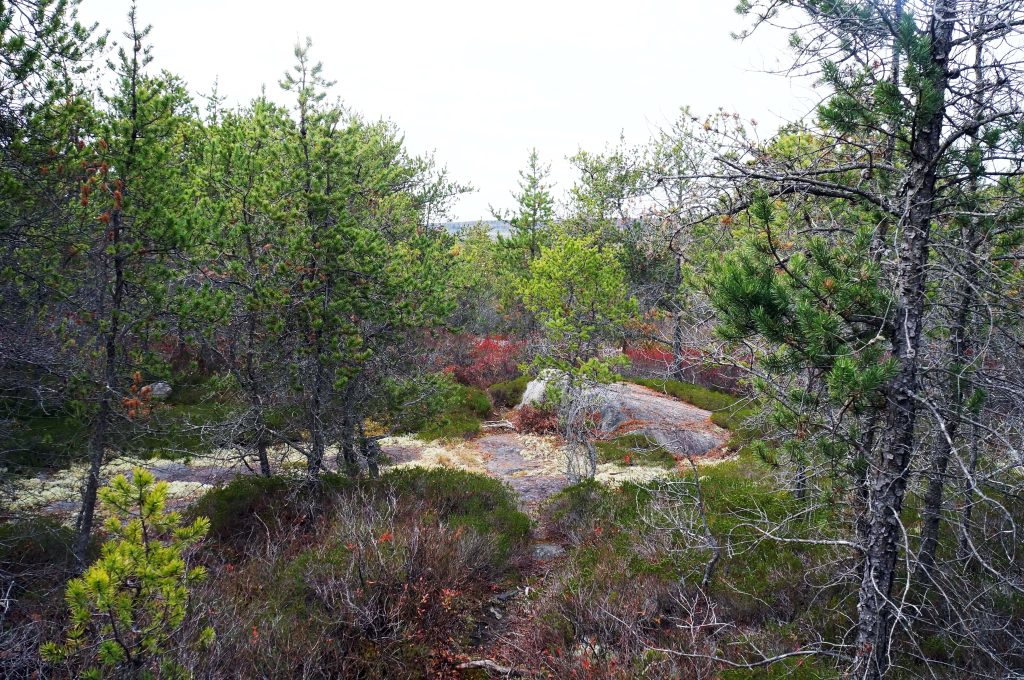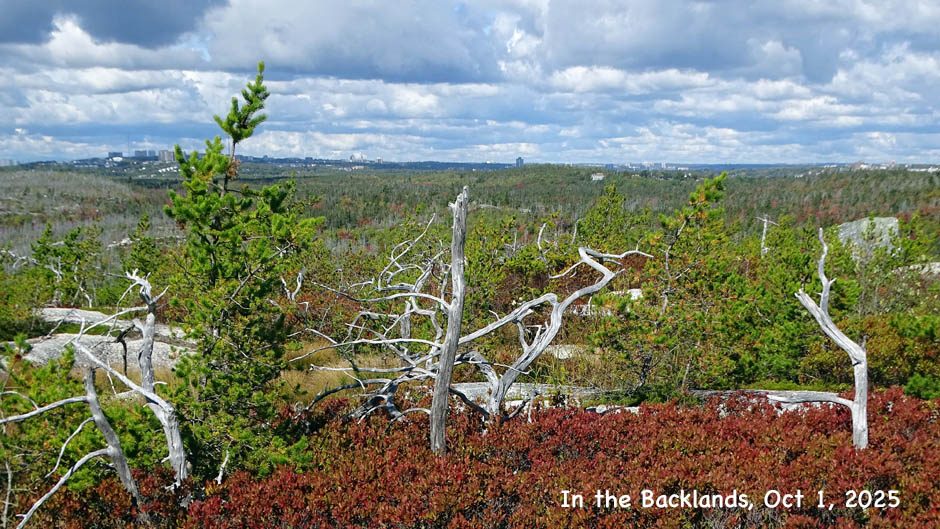DRAFTING NEW SECTION….
OVERVIEW
On this page:
1. WLB PLANT VEGETATION TYPE
2. RELATIONSHIP TO NSFVT OW1
3. OVERLAP WITH OTHER VEGETATION TYPES
4. FIRE DEPENDENCE AND POST-FIRE SUCCESSION
5. DISTRIBUTION, CONSERVATION STATUS, RARE SPECIES
Subpages:
1. WLB (WILLIAMS LAKE BACKLANDS) PLANT VEGETATION TYPE
The “Jack Pine/Broom Crowberry Barrens” (JP/BC Barrens) were first recognized and labelled as such by Hill & Patriquin 2014 in Ecological Assessment of the Plant Communities of the Williams Lake Backlands, A REPORT to The Williams Lake Conservation Company.
From that document under a section on UPLAND PLANT VEGETATION TYPES OF THE WILLIAMS LAKE BACKLANDS*:
__________
*As there was no comprehensive VT (Vegetation Type) classification in use for NS at the time, we devised our own for the vegetation of the WLB (Williams Lake Backlands), but indicated where there was a corresponding VT in other systems, notably the NS Forest Ecosystem Classification (Neily et al, 2011).
| VT3. Jack Pine/Broom Crowberry Barrens In this VT, Jack Pine occurs (i) as single or a few gnarled trees growing in cracks on rock barrens, (ii) in smallish (10-50 m across) treed patches with Jack Pine alone or dominated by Jack Pine and (iii) in more contiguous, larger patches interrupted by rock barrens or wetlands. Tree canopy cover ranges from less than 10% percent to about 60%. Big-toothed Aspen is the most common other tree in most mixed stands, followed by Red Maple, Wire & Paper Birch, Red & Black spruce. (Additionally, Jack Pines occur singly and in clusters in the Red Pine/Jack Pine/Broom Crowberry VT, and isolated Jack Pines occur in the Birch/Maple/Aspen VT, usually adjacent to their occurrence on Jack Pine/Broom Crowberry Barrens.) Broom Crowberry and Huckleberry are the most common associated shrubs, the Broom Crowberry occurring in edge areas on shallower soils, often with Reindeer Lichen, while Huckleberry occurs on deeper soils, growing tallest (to circa 1.5 m) where there is more exposure to the sun. Sheep Laurel may also occur, and in wet pockets, Huckleberry is replaced by one or more of Leatherleaf, Rhodora, Inkberry. |

Jack Pine/Broom Crowberry Barrens, Nov 6, 2013. The last fire in this area was likely in 1964, so this site in 2013 was 49 years post fire. Visible in the photo: Jack Pine, Black Huckleberry, some with a few fire-engine-red leaves remaining, others, without leaves; the “green fringe” extending into open/lichen covered areas is Broom Crowberry. Whitish clumps are “reindeer lichens”, mostly 3 species (Cladonia uncialis, C rangifera, C. stellaris). There are narrow foot paths which remain vegetation-free.
Click on image for larger version.
2. RELATIONSHIP TO NSFVT OW1
As we noted at the time (Hill & Patriquin, 2014, p.XXX), there was a lot of overlap of our description of the JP/BC Barrens with the NS Forest Vegetation Type OW1, but they differed substantially in two regards:
(i) Broom Crowberry was characteristic of the JP/BC Barrens, and we observed no Black Crowberry, whereas for OW1, Black Crowberry was cited as characteristic, with Broom Crowberry occurring only occasionally.
(ii) Tree Canopy Cover cover in the JP/BC Barrens was described as less than 10 to 60% whereas the Open Woodland (OW) Ecosystems were differentiated from Forest Ecosystems by having tree canopy cover less than 30%.* From page 14: Forest versus Woodland In this guide, forests have sites which can (and normally do) support a minimum of 30% crown closure by trees. Open woodlands are upland sites where natural disturbances (e.g. frequent fires) and/or site conditions (e.g. sandy soils, excessive surface stoniness, bedrock exposures) generally limit the establishment of trees to less than 30% crownclosure. In some cases, open woodlands containing hardwoods (especially red oak) can have more than 30% crown closure despite having low tree densities. These sites may still meet the definition of open woodland with respect to VT determination.
(ii) The more fire-sensitive species listed under OW1, notably Eastern Hemlock and Bazzania trilobata (a liverwort) were not found in JP/BC Barrens of the Williams Lake Backlands.
The NSFVT OW1 reference was to NSFVT OW1 cited on pp 122-123 in
Forest Ecosystem Classification for Nova Scotia Part I: Vegetation types (2010)
by Peter D. Neily, Seán Basquill, Eugene Quigley, Bruce Stewart, Kevin Keys Published 2011 ISBN-13: 978-1-55457-413-1, ISBN: 1-55457-413-7
https://novascotia.ca/natr/forestry/veg-types/pdf/vegtypes.pdf
A revised Forest Ecosystem Classification for NS was published in 2023:
Forest Ecosystem Classification for Nova Scotia (2022): Field Guide
By Peter Neily, Sean Basquill, Eugene Quigley, Kevin Keys, Scott Maston, Bruce Stewart. March 2023. ISBN 978-1-77448-495-1
Forestry and Wildlife Branch, Nova Scotia Department of Natural Resources and Renewables, Biodiversity Tech Report 2023-002
https://novascotia.ca/natr/wildlife/pdf/2023-002-biodiversity-tech-report.pdf
In this latter version, Broom Crowberry rather than Black Crowberry is cited as a major characteristic species; Tree Canopy Cover is still defined for Open Woodland as less than 30% except in some sites with hardwoods; Eastern Hemlock and Bazannia trilobata are not included under Characteristic Plants. View This Page for details.
For most intents and purposes, the Jack Pine/Broom Crowberry Barrens (Hill and Patriquin, 2014) and NSFVT OW1 (Neily et al., 2023) are fully equivalent. As both the old (2011) and newer (2023) documents describing NSFVT OW1 remain posted on the NS Government website, it’s important to specify the year (Neily et al., 2023) if describing the communities in the Backlands as NSFVT OW1.
3. OVERLAP WITH OTHER VEGETATION TYPES
